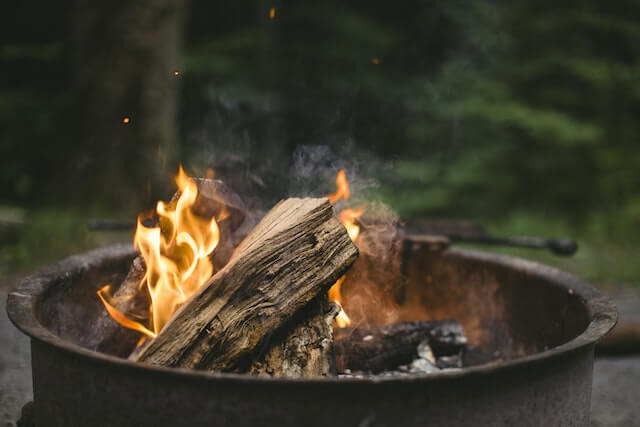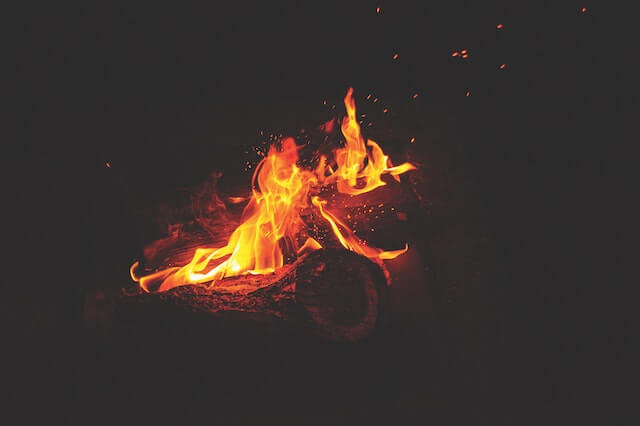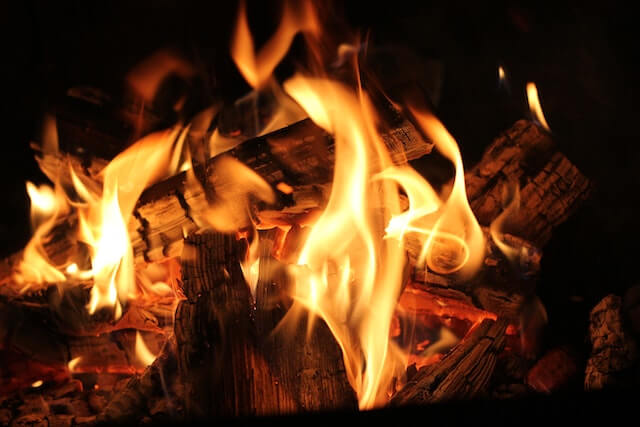Wood has been used for centuries to keep warm and cook food. Trees have been cut down for fuel and building materials. But what about wet wood? Can it burn, or is it just a waste of time? Let’s find out once and for all.

The answer to if you can burn wet wood depends on a few factors. The moisture content of the wood, the type of wood, and how humid it is in the area you are burning the wood all play a role.

The moisture content of wood refers to how much water content the wood contains. The water in the wood must be released and burned off as steam for the log to catch fire and generate heat. If there is too much water in the wood, then it will not burn well.
The type of wood also plays a role in how wet it can be before it stops burning. Softwoods, such as pine and cedar, contain more moisture and are less dense than harder woods like oak or maple. This means that softwoods cannot hold as much water without losing their ability to burn.
The humidity of the area where you are burning wood can also play a role. Wetter climates tend to have more humid air than drier areas. If your wood is in an area that has a high level of humidity, it may not be able to burn as easily compared to if it is in an area with low humidity.
Wet wood is not only difficult to ignite and keep burning, it also produces more harmful smoke than dry wood.
The Facts About Wet Wood
There are a few facts to be aware of when it comes to burning wet wood. First of all, it’s a task that can be done, but it’s not going to be easy. Starting a fire with wet wood will take more energy and once it is burning, it won’t provide as much heat.

When wood gets wet, its moisture content goes up. This might not seem like a big deal, but it actually makes wet wood much harder to ignite and keep burning. In fact, it can take up to 50% longer to get a fire going with wet wood. And once you do get it going, the fire will likely be less intense and produce less heat than if you were using dry wood. So if you’re trying to stay warm on a cold night, burning wet wood is not going to cut it.
Wet wood also produces more smoke than dry wood.
This is because wet wood does not burn as effectively, so it gives off more of the unburned gasses that make up smoke. This can be a major problem if you’re trying to heat your home or cooking over an open fire.
So it’s important to make sure your fireplace or wood stove is properly ventilated if you are burning wet wood.
Tips for Burning Wet Wood
If you’re stuck with wet wood, here are a few tips to help make the best of it:
- Start with dry kindling: This will help get the fire going without using up all of your precious energy.
- Split the wet wood into smaller pieces: If you want your wood to dry out faster and be easier to light, chop it into smaller pieces.
- Build a tepee with your smaller pieces of wood: This will help create a chimney effect with the airflow and will make it easier to get the fire going.
- Be patient: It might take longer than usual to get the fire going, but don’t give up! If you keep at it, eventually you’ll see some progress.
- Add some dry logs to the fire: Once you’ve got a good base going, add in some larger pieces of dry wood to help keep the flames alive.
- Keep the fires going: wood burns best when there’s a consistent supply of oxygen, so make sure to keep feeding the fire with fresh air.
With these tips, you’ll be able to get your fire going with wet wood – even if it takes a bit longer than normal.

So if you’re looking to keep warm on a cold night, or want to cook over an open flame, remember that wet wood is not ideal for burning. But with a bit of patience and some tips from experienced fireplace users, it is possible to get a fire going with wet wood.
Final Thoughts
So there you have it – the truth about burning wet wood. It can be done, but it’s not going to be easy. You’ll need patience, determination, and some good old-fashioned elbow grease. But with these tips, you’ll be able to start a fire and keep it going, even if your wood is wet.
So next time you’re looking for a cozy way to stay warm or need something to cook over an open flame, don’t let wet wood stop you from enjoying your fireplace or campfire. Instead, use these tips and get a fire going, even if your wood is a bit damp.
